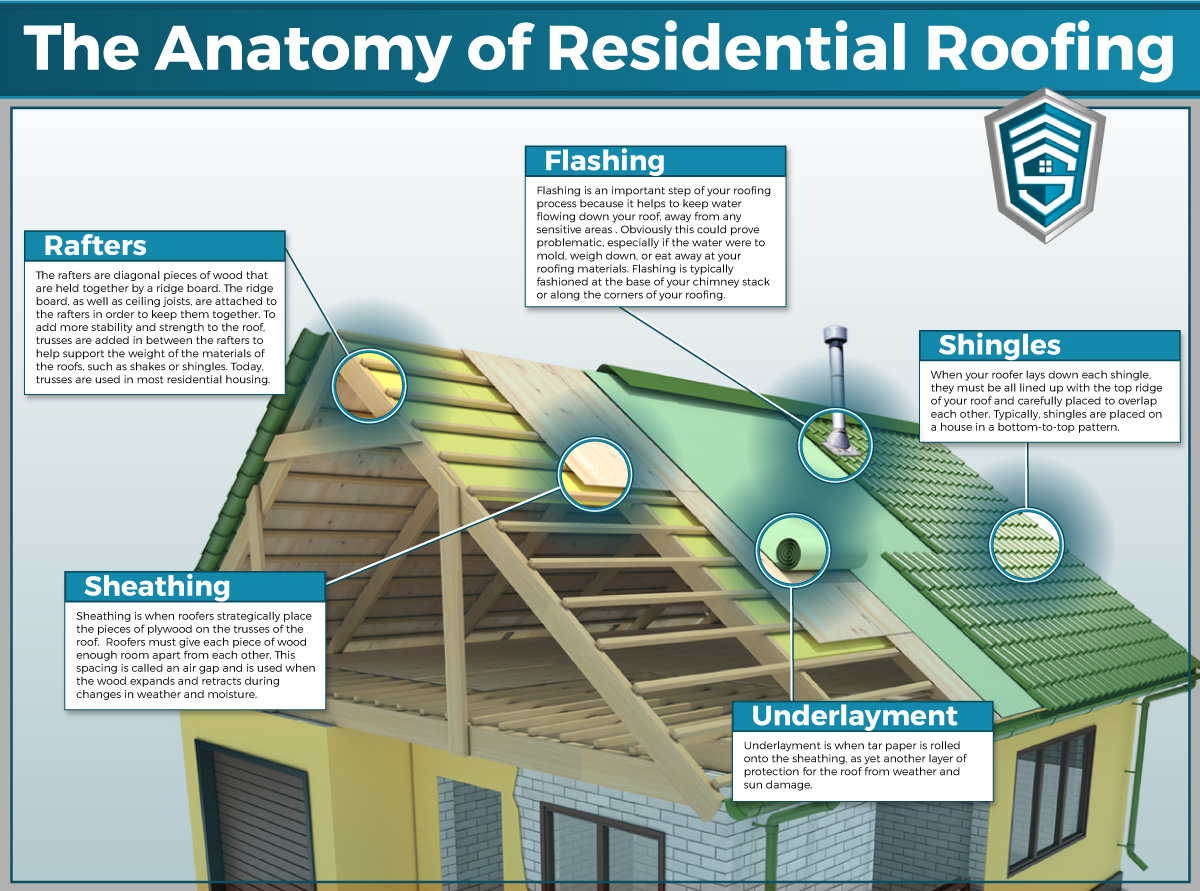Neglecting Roof Covering Air Flow Can Cause Pricey Repair Work; Uncover The Essential Factors To Consider That Ensure Efficient Installment And Preserve Your Investment
Neglecting Roof Covering Air Flow Can Cause Pricey Repair Work; Uncover The Essential Factors To Consider That Ensure Efficient Installment And Preserve Your Investment
Blog Article
Writer-Kock Curtis
When you're taking on a roof job, you may not assume much about roof ventilation, yet it's more essential than you understand. Efficient ventilation aids regulate temperature and dampness in your attic room, preventing problems like mold and mildew and architectural damage. By understanding how to design and set up a balanced ventilation system, you can enhance energy effectiveness and prolong the life expectancy of your roofing materials. So, what are the crucial aspects to consider during setup that can make all the distinction?
Importance of Roof Covering Air Flow
Roofing system ventilation plays an essential duty in keeping the total wellness of your home. By enabling fresh air to circulate through your attic, it aids regulate temperature and dampness degrees. This equilibrium is vital to avoid warmth accumulation during hot months, which can result in increased power costs as your air conditioning burns the midnight oil.
Additionally, san antonio vinyl siding reduces the risk of moisture-related concerns like mold and mold. If moisture levels rise, your home's architectural integrity can be compromised, bring about costly repairs. You would not wish to deal with rotting wood or warped roofing products, right?
Furthermore, adequate ventilation extends the life expectancy of your roofing system. When heat and wetness are kept in check, your roofing can perform ideally, avoiding premature deterioration. https://expert-roof-repair-and-re84061.dsiblogger.com/66951957/just-how-to-recognize-common-roof-covering-troubles-in-your-home means fewer headaches and costs down the line.
How Roofing Ventilation Works
Effective roof covering ventilation relies on the all-natural movement of air to produce an equilibrium in between intake and exhaust. When you mount vents, you're essentially enabling fresh air to enter your attic while making it possible for warm, stale air to leave. This procedure helps control temperature level and dampness levels, protecting against problems like mold growth and roofing damages.
Intake vents, commonly discovered at the eaves, draw in cool air from outside. Meanwhile, exhaust vents, located near the ridge of the roofing system, let hot air increase and leave. The distinction in temperature produces an all-natural air flow, referred to as the stack effect. As warm air increases, it produces a vacuum that pulls in cooler air from the reduced vents.
To optimize this system, you need to ensure that the consumption and exhaust vents are properly sized and positioned. If the intake is limited, you won't attain the wanted air flow.
Also, insufficient exhaust can trap warm and moisture, resulting in potential damages.
Secret Installation Considerations
When mounting roofing system air flow, several essential considerations can make or break your system's effectiveness. First, you need to assess your roofing system's design. The pitch, shape, and materials all influence air flow and air flow selection. See to it to choose vents that fit your roof covering type and neighborhood climate conditions.
Next off, think about the positioning of your vents. Preferably, additional resources 'll desire a balanced system with consumption and exhaust vents placed for optimum air movement. Place consumption vents short on the roofing and exhaust vents near the optimal to motivate an all-natural circulation of air. This arrangement assists protect against moisture accumulation and promotes energy efficiency.
Do not forget insulation. Correct insulation in your attic protects against heat from leaving and keeps your home comfy. Make certain that insulation does not obstruct your vents, as this can prevent air movement.
Lastly, consider maintenance. Select air flow systems that are very easy to gain access to for cleaning and inspection. Regular maintenance guarantees your system continues to operate efficiently with time.
Conclusion
Finally, roof covering air flow is necessary for an effective installment. By making sure appropriate air movement, you can prevent warmth build-up and dampness concerns that lead to expensive damage. When you purposefully position intake and exhaust vents, you boost energy efficiency and prolong the lifespan of your roofing system. Remember, why not try this out -ventilated roof not just protects your financial investment but also improves your interior air quality. So, prioritize air flow to make sure a resilient and economical roof for your home.
